Take a Hobart to Launceston Road trip and uncover the past
You can typically drive between Hobart and Launceston in approximately 2.5 hours, but why rush from one point to the other. There are some wonderful stops along the way, you can make a day of it. Retracing 4 of the original Hobart to Launceston day trip from a time gone by. Which is one of the main reasons we put this special itinerary together. It is just one Tasmania road trip itinerary you can do.
The beauty of this is it works well either way. It can be a Hobart to Launceston or a Launceston to Hobart. You just reverse the order of the stops, treat it as a steppingstone to continue on your travels or an overnight stay. It is possible to do it all and return in one day, but we would recommend staying overnight.
Alternate Transportation
For those without a car you can take this trip a slower pace on the regular bus that travels between the cities. I have included the Hobart to Launceston bus timetable for your convenience, I would recommend doing this over two days staying overnight in Ross.
Preview – 4 Great Stops on the Hobart to Launceston Road Trip
Our preview, highlights what stops can be included when you travel from Hobart to Launceston or Launceston to Hobart by car. This day trip has been put together to complement the 13 must do one day itineraries around Hobart. Linking the two cities via a road trip travelling along the most common route.
- Kempton – take a walk around town and view the collection of Georgian buildings. Alternatively stop at the Distillery for a tasting and tour.
- Oatlands – one of Tasmania’s oldest towns that has been able to retain its charm over the years. Whether it’s walking around the village or down to the lake you won’t be disappointed.
- Ross – wander around this garrison town, following the interactive map. Alternatively, picnic at the magnificent Ross Bridge with its unique carvings.
- Campbell Town – explore the town follwoing the historic description of cottages over a century old. View the oldest surviving brick arch bridge in Australia, or follow the convict trail detailing information of many of the convicts sent to Australia between 1788-1868.
- Other places of Interest on your Hobart to Launceston Road Trip – here is a brief overview of some towns that were pivotal stops along the Hobart to Launceston road trip of the 1800’s. Many of which are now bypassed along the road to Launceston or another destination.
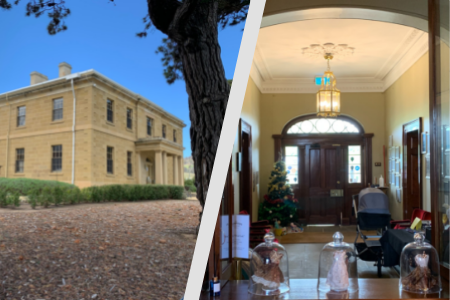
Kempton
Kempton, stop 1 on the Hobart to Launceston road trip. Alternatively it could be stop 4 if coming from Launceston.
Originally known as Green Ponds when established and first settled in 1814-1816. At the base of Constitution Hill it was known as a popular coaching stop on the original Hobart to Launceston road trip in the 1800’s.
A considerable quantity of land was granted in 1816 to Anthony Fenn Kemp, a tempestuous character, deeply involved with several nefarious occurrences.
In 1838, Green Ponds was renamed Kempton due to the size of Kemp’s assets in the area. The towns rapid growth came about with the construction of the main road, which ran directly through the town. The construction gangs consisted convicts and their military minders who were housed in the area.
At one time Kempton housed eleven inns each vying for the passing coach trade. The town contains many building in the Georgian style that can be viewed during a walk around the streets. Many contain plaques relating the history of the buildings.
Dysart House
An excellent example of architecture of the time, originally commissioned by William Henry Ellis an emancipated convict. The sandstone mansion was built by stonemason Andrew Bell (c.1842). Initially known as the Green Ponds Hotel where it served as an inn, public house and residence until the 1860s.
Currently it is the site of the Old Kempton Distillery where you can sit in the cask lounge area and enjoy a tasting of whisky or gin. Alternatively, designated drivers are able to get a take away tasting, so you can continue your Hobart to Launceston road trip unimpeded. Alternatively, you can enjoy a café meal in one of the restored dining rooms. The providore, which contains all local Tasmanian produce including that of the distillery is in the main foyer area.
The distillery pays homage to its original owner, William Ellis, by way of two gins ‘Six Shillings’ and ‘Embezzler’. As Ellis’s crime of embezzlement of six shillings, saw him receive a sentence of 14 year’s transportation.
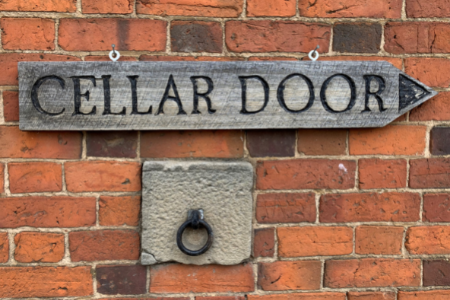
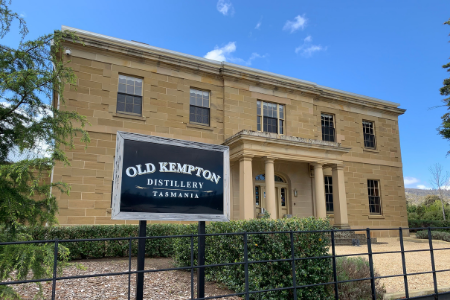
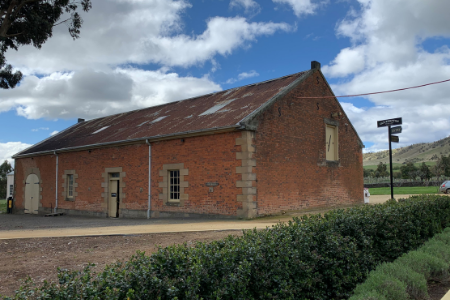
Oatlands
Oatlands the second stop on the Hobart to Launceston road trip. Alternatively, stop 3 if coming from Launceston.
The town was originally founded in 1821, after being recognised as an important site. Not only for the developing road being built but as a military base for the management of convicts on the road gangs. Additionally, it is one of the original towns along the Hobart to Lanceston road trip of the 1800’s.
Once believed the town would become a major centre of Tasmania many streets and houses were formed to house the free settlers moving into the area.
Using the visitors map wander around the town and discover many of the original sandstone houses in surrounding streets. Whilst now mostly privately owned homes, and the site of restaurants, cafés and boutique shops, they are still beautiful to see. Stop for a bite to eat at The Imbibers or The Pancake and Crepe shop.
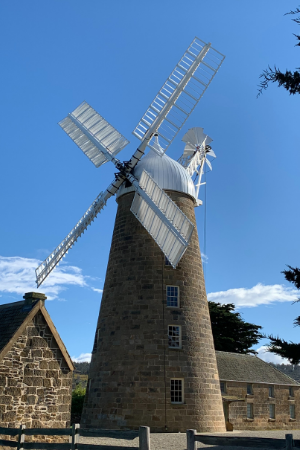
It is difficult to put into words the beauty of this town as you wander about. Especially the care taken to retain many of the sandstone structures.
Take a stroll around Dulverton Lake following the walking trail, also a highlight with its sanstone overhangs and low cliffs. Spot the various bird life and the odd sculpture amongst the reeds.
Pick up an ‘Oatland Key’ and take a self-guided tour around select buildings of historic significance. These are available at establishments displaying the ‘Oatlands Key’ sign.
This holds especially true for the magnificent tower mill seen from the present Midlands highway.
Callington Mill
This fifty foot tower mill eclipses the surrounding town, and deemed the only working 19th century tower mill in the southern hemisphere. Built in 1837, with a capacity to mill 20-30 bushels an hour. Professed to be an exceptional rate, for the districts production of 18,000 bushels of wheat from the surrounding farms.
The mill changed hands between the original owner and his son in 1845. Over the years the mill has had sold numerous owners each making their own improvements.
After a series of unfortunate events, the mill finally closed in 1892-93 when banks forclosed on the then owners loan. This saw the mill fall into disrepair with a fire destroying the cap and internal structure.
The heritage value of the mill was finally recognised and has been lovingly restored over the past 40 years. Local community groups, National Trust, corporate sponsors and local, state & federal governments have all contributed.
The mill site is also now home to a state of the art distillery offering a new era for Tasmanian whisky and tastings at the cellar door.
With all that is available at Oatlands consider adding this as an overnight pitstop to your Hobart to Launceston road trip. You will find accommodation to suit all styles of travel within this beautiful town.
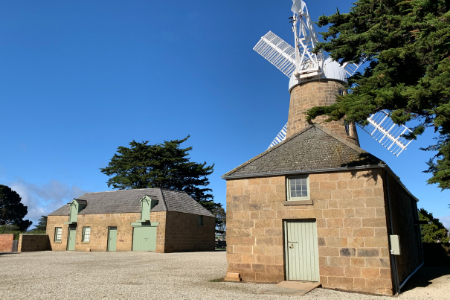
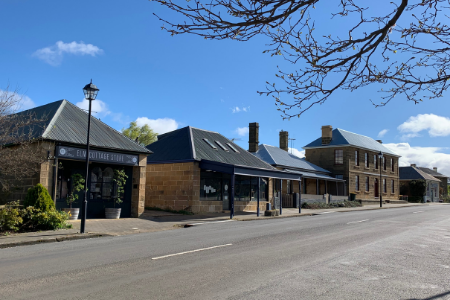
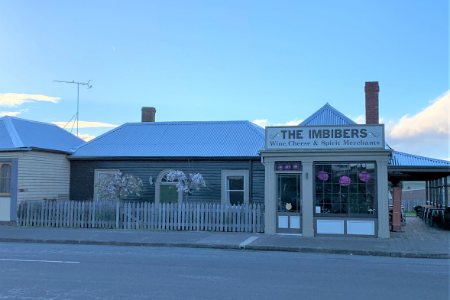
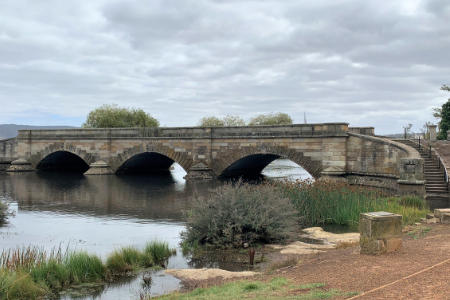
Ross
Ross stop 3 on the Hobart to Launceston road trip. Alternatively, stop 2 if coming from Launceston.
Though not proclaimed a town until 1821, soldiers had been garrisoned at the ford of the Macquarie River. Their sole occupation was to protect the developing town from 1812. At the time the town was established a timber bridge was built to cross the ford. This was later replaced by a magnificent sandstone bridge in 1836, which still stands today.
The town itself is listed on the Register of National Estate along with many of the buildings being independently registered.
Many of these now house galleries, antique shops and cafes. When in Ross you must visit the towns bakery which has been in the same building for over 100yrs. Using the original wood fired semi scotch brisk ‘3 bag oven’, which is indeed a unique piece in itself.
Also home to the Tasmanian wool centre, with an interactive museum where you can immerse yourself in the feel and scent of wool. A collection of wool that dates back to 1950 and a chronological history of the wool industry in Tasmania. In addition to offering displays of intriguing objects, the pioneers of Ross and other historically significant exhibits.
Walking Tour into the Past
Ross is also home to one of four ‘Female Factories’ that operated in Tasmania. Built in 1840 the probation station held incarcerated women between 1847-1854. Similar to the Cascade Female Factory in Hobart, these women were divided into three classes. All that remains today is the Overseers cottage where a display can be viewed of the site (Thurs-Sun – 10:00-16:00).
The consistent military presence over time is marked at the old barracks on the main street of town
An interactive map is available to enjoy a stroll through town at your own pace visiting all the building that are of interest to you. Or like us you can just wander about the town aimlessly.
The bypass by the Midlands Highway that forms the itinerary of our Hobart to Launceston road trip. Is much celebrated by the residents of Ross. Proclaiming an untroubled wander down the elm lined main street of town available due to lack of traffic.
That said tourists flock to the town to marvel at the bridge and it’s unique carvings. Including those of Celtic God and Goddesses, animals, birds, insects, and plants.
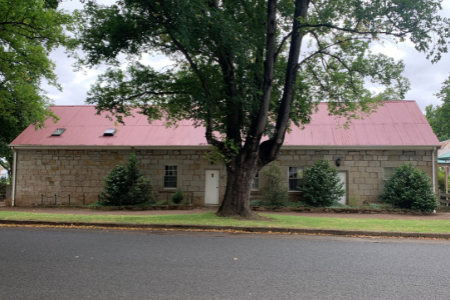
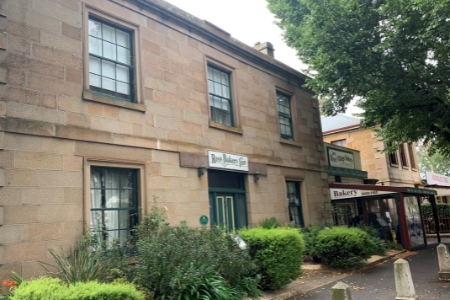
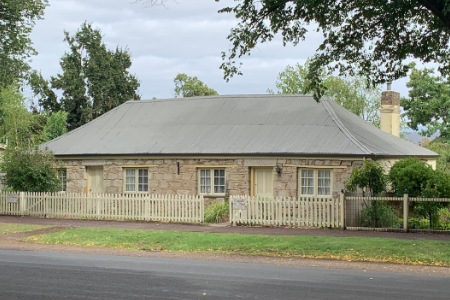
Campbell Town
Campbell Town the 4th stop on the Hobart to Launceston road trip itinerary. Or the 1st stop on your journey when coming from Launceston.
Whilst first surveyed in 1812 with the original municipality named by Governor Macquarie’s second tour of Tasmania in 1821. This town is another example of well preserved colonial history of the Georgian era in Tasmania.
The first building erected was for the constable of the town in 1821 . The town grew from there with a causeway (c.1823) and the inn opened in 1824.
Land grants to free families followed, with the Leake family being amongst the first arriving in 1823. John Leake acted as the local magistrate after becoming a justice of the peace in 1832. The Leake family played an important role through-out the history of Campbell Town.

The town grew quickly in the 1830’s with many cottages, inns and stores being established. With the area deemed as a producing some of the finest merino wool in the world. In additional to having a collection of over one hundred homes aged over a century old. During your stop at this colonial town you can wander the streets discovering many of these. You can take a self-guided tour using the brochure ‘Campbell Town – the historic heart of Tasmania’.
Additionally, a short distance from the town you will discover Lake Leake named for Charles Henry Leake (John’s youngest son) in 1883. This was an important reservoir created to supply water to the township in the late 1800’s. The Lake is adjacent to the highway that connects Campbell Town to East Coast Tasmania. An alternative to continuing on the Hobart to Launceston road trip.
Unlike the previous towns mentioned, Campbell Town with it’s wide main street is still part of the main road linking Hobart and Launceston (Midlands Highway).
Upon entering the town from Hobart you cross The Red Bridge. The oldest surviving brick arch bridge in Australia, designed by convict James Blackburn. The foundation for this bridge was laid by Lieutenant Governor Arthur in 1836. The bridge was constructed by convict labour from 1,250,00 bricks handmade from clay on the east side of the site. The bridge was completed in 1838.
The Convict Brick Trail
Whilst in Campbell Town a must is to explore at least some of the Convict Brick Trail. Starting either end of town traversing both sides of the main street. The bricks document not only those sent to Tasmania, but many of the 200,000 convicts transported to Australia between 1788-1868. The information on the bricks includes:
- Name of Convict
- Age at time of Arrival
- Name of transportation ship and year of arrival
- Crime and sentence length
- Comments
- Index number of the brick
The details of the Convict Brick Trail database have been made available by the council. You are able to search the listing by name, it will then direct you to where the brick is located. Additionally you can follow the link to download the councils PDF of the full listing.
From Campbell Town it’s a short drive to Launceston, and completing the Hobart to Launceston road trip.
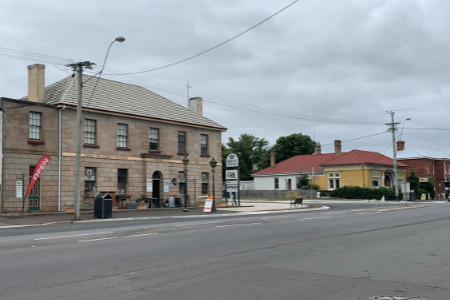
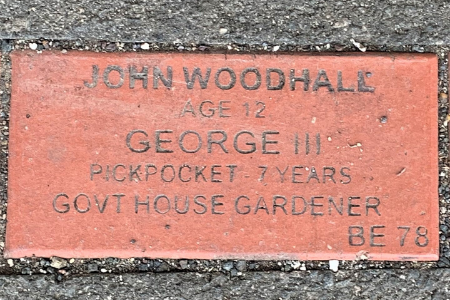
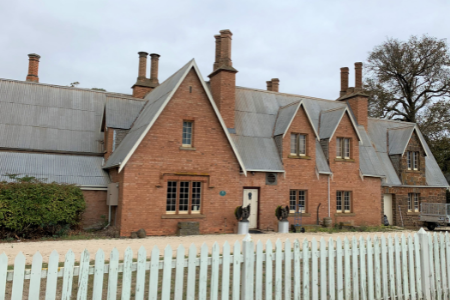
Other places of Interest on your Hobart to Launceston Road Trip
Whilst only 4 Great stops have been mentioned in detail along the Hobart to Launceston road trip. As you can imagine in the days of horses and coaches there would have been many more.
Highlighted below, are several towns that you will note as you drive along the highway. Including a bit of their past, if you are tempted to add them to your Hobart to Launceston road trip. Some of these places are still used as stops, though many are just passed through in a rush to get to from Hobart to Launceston or vice versa.
- Bagdad – once a town of importance, used for horse changes and rest area before travelling up Constitution Hill. Now you will find the area filled with orchards, where you can obtain beautiful fresh fruit in the picking season.
- Melton Mowbray – at one time a busy town based around Melton Manor (now The Melton Mowbray hotel). A prominent place where government officials, gentry and military officers would stay. Known as a prominent place for horse racing and hunts.
- Bothwell – A small diversion, a town not to be missed and a short distance from the main road. This small town was the start for many Scottish families settling here in the early 1820’s. Home to one of the oldest continuously run hotels in Australia, the Australian Golf museum, and well known for golf, fisshing and hunting.
- Jericho – a little off the Midlands Highway, founded in 1816, and like the surrounding towns it is filled with beautiful examples of colonial architecture. Additionally, it was one of the prominent points where convicts where housed during the construction of the Hobart to Launceston road.
- Antill Ponds – receives a mention here as it is the half way point on the road between Hobart and Launceston. Named for Governor Macquarie’s aid, Henry Colden Antill and a major town during the time of horses and trains.
- Tunbridge – a popular town in the days of horses and coaches. Where you would find three coaching inns, the Tunbridge Wells Inn (c.1825), the Victoria Inn (c.1843) and the York Inn (c. unknown). Each of the inns were associated with one of the three different coaching companies of the era.
- Conara – an important social centre of the Midlands area, during the 1880’s as the railways begun across the state. Still used as a ‘siding’ today, though once deemed a railway town. When passenger travel ceased along one line in the 1950’s the town’s population declined, as railway workers made up the majority of its population.
- Cleveland – Established in 1842 primarily as a coaching stop for travellers to gather and safely traverse Epping Forest. A known area where infamous where bushrangers gathered. Two historic establishments, still standing, Cleveland House (originally the Bald Faced Stag Inn c.1838) and St Andrews Inn (c.1845). St Andrews Inn is still available as a venue for gatherings and events
- Epping Forest – Originally named Epping in 1811, was unofficially coined Epping Forest until 1956. Said to be a notorious area for bushrangers, still has several heritage listed buildings remaining (now privately owned).
There are two other towns before finally reaching Launceston that are deserving of mention on the Hobart to Launceston road trip. These are Evandale and Perth though these towns are worthy of a day trip in themselves and will be included in a future post. Come wander with us to learn more…
Other articles that will help you plan your trip around Tasmania.
Come explore Tasmania – all you need to know.
Coming to Tasmania, should you fly or float?
13 Best Luxury Hotels to Stay in Hobart
13 Must Do One Day Itineraries around Hobart
13 Delicious Restaurants Around Hobart CBD
13 Best One Day Itineraries around Launceston





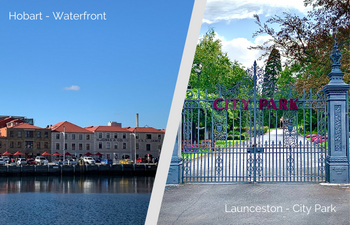
I hope to visit Australia sometime next year with my family. What a great article on what to do from Hobart to Launceston. I’ll have to save it to reference for my next trip!
You will love it and you must come down to Tasmania it is also very beautiful…
Wow, what an incredible trip you’ve planned! I would love to visit each and every one of the sites you listed, Ross looks especially rich in history and beautiful.
Ross is exceptional as are all the stops it is some of Australia’s oldest history of colonisation
Stopping at small towns is half the fun of road trips. Although not a long distance there seem to be quite a lot of great places to stop. The convict brick trail sounds really interesting. Amazing what classed as a crime worthy of sending someone around the world for back then.
I agree the small towns were great to stop at and so much history…it was crazy they had a fondness for 7 yrs or life…no matter the crime…
Some great places to explore on a road trip around Tasmania. I’ll save this for my next visit! I love Tasmania!
Thank you, they were and Ross’s famous bakehouse is not to be missed…have a great trip when you come down
I did a 2-week tour of Tasmania in December 2021. At the time, I was disappointed that we just drove straight through these towns because they looked worth exploring. I have saved this post as I plan to go back to Tasmania with my own car and explore at leisure.
They are beautiful old towns you will love them, so much Australian history within them…
Because of my VA job for Tasmania I get more excited reading your travel articles around it.
Glad you like them, it is a beautiful state you will love it…
Campbell Town looks amazing! What a great itinerary.
Thank you, yes I love Cambell Town also… just wandering the red brick trail…
Wow, such amazing places.
Thank you I thought they were pretty amazing also
I hope to visit these fascinating locales soon. I love stumbling upon history on my trips. So much to learn.
Me also and as one part of my family is convict descent I still wander Campbell Town looking… just sad that many were so young
That’s so fascinating! Did you find any trace of them? It sounds similar to the experience of going to Elis Island here in the USA.
I haven’t yet but I have the other side of the street to do yet…Elis Island is somewhere I’d love to see and we have family (italian side) that are scattered about the US also…
I love exploring “off the path usually traveled” interesting spots! These are great! Appreciate the tips!
Thank you, so do I… We mostly find some hidden gem or fact wandering about the old places…
Road trips are always going to be some great family bonding time. Looks like y’all had a blast! Thanks for sharing
You’re welcome David and yes it was fun and they are all relatively close together so no tiring drive between…
I love all the history of these places along the way from Hobart to Launceston! The convict information would be most interesting to me.
You would love it the history it is fascinating and so sad for the convicts and our indigenous people…
Shar yes that interactive map was really helpful, thank you I tried to get most things…
This looks like a comrehensive list of places. I agree, using an interactive map is so helpful.
Thanks for sharing, on our trip around Australia when we get to Tassie, I will be putting these on my list of must see places. Thank you.
Thank you, I hope to have more for you to see and do once you get here…
The brick trail would be so interesting to see and explore. Amazing that they cast the information in clay to make a living history.
It seriously is my most favourite thing to do in Campbell Town…I think it a bit ironic they have put the information in clay, as I believe they are made from the same clay that the convicts used to make the 1.25 million to build the bridge…
It’s amazing how many interesting things there are to do and see so close to home! It’s great fun to search them out!
It is amazing before these past few year we have been busy travelling off to Europe.. now we have been made to explore our own back yard…it’s truly wonderful…
On a recent tour of Tasmania we drove straight through from Launceston to Hobart. I was disappointed that we didn’t stop at these small, historic towns. Next time I am taking my own car.
They really are amazing, we stayed in Oatlands for a couple of nights and still didn’t get to see them all…oh damn another trip will be needed… ha ha